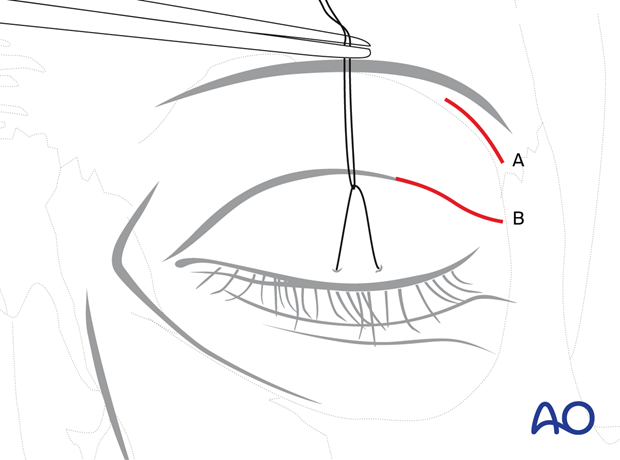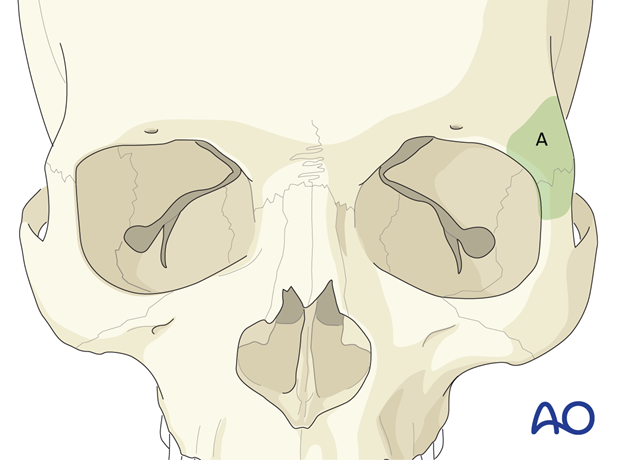Approaches to the superolateral orbital rim
1. Overview
There are two periorbital approaches to the superolateral rim of the orbit:
- Lateral eyebrow approach (lateral brow approach, A)
- Upper eyelid approach (upper blepharoplasty or supratarsal fold approach, B)
The appropriate choice of approach is left to the surgeon’s preference.

2. Access area
Lateral eyebrow approach
The lateral eyebrow approach (A) gives rather limited access to the zygomaticofrontal process and the suture line (superolateral orbital rim).
The brow skin is thick, and the wound edges are not very amenable to retraction, but the overall skin mobility allows for shifting of the wound pocket over the bony surface, thus increasing exposure by varying the traction vector. The entry into the superolateral internal orbit is very restricted, and it is difficult to gain much exposure to the zygomaticosphenoid suture line.
A lateral extension of the incision outside the brow will cause conspicuous scarring. Inferior extensions will cross the relaxed skin tension lines (RSTL).

Upper eyelid or upper blepharoplasty approach
The upper-eyelid or upper blepharoplasty approach (B) offers greater versatility and enhanced accessibility to the superolateral rim than the lateral eyebrow approach. It also results in a better esthetic outcome. The soft tissues of the upper lid are thin and resilient so that the incision site can be easily maneuvered onto the bony surfaces. In addition, the incision can be extended laterally across the lateral orbital rim, above the lateral canthus insertion, without esthetic drawbacks. The lower portion of the lateral rim is more readily exposed, and the lateral orbital wall can be thoroughly inspected.

3. Link to detailed descriptions
Read a detailed description of the superolateral orbital rim approaches:
- Lateral eyebrow approach (supraorbital eyebrow approach, A)
- Upper eyelid approach (upper blepharoplasty or supratarsal fold approach, B)














